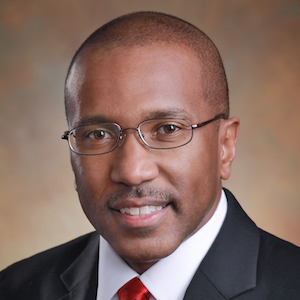
Harry Williams, president of Delaware State University. Photo courtesy of jbhe.com
Faced with a tight budget, Dr. Harry L. Williams, president of Delaware State University, a historically Black institution, desperately sought ways to cut spending. And he found one. Williams eliminated a quarter of the university’s academic programs and started recruiting non-Black students.
He has even looked to China for potential students, negotiating deals with universities over there to bring exchange students to Delaware State.
“It’s a revenue generator for us and a way of marketing the university,” Williams said of the school’s international recruiting. “We’re definitely committed to our heritage and our history. But we had to make sure that we were relevant and have programs that would attract students.”
Other historically Black colleges, or HBCUs, have followed suit. Stalled funding from state governments and low enrollment numbers have forced these institutions to seek non-Black students. Tennessee State University and North Carolina A&T are just a few examples of Black schools seeking white, Latino and Asian students in order to make ends meet. Many HBCUs are state-funded and don’t receive large endowments like other major institutions.
According to a report from the University of Pennsylvania, a quarter of all HBCUs now have at least a 20 percent non-Black population. Prairie View A&M University, a historically Black college not far from Houston, is also seeking to diversify its student body, specifically focusing on Latinos.
In an article published by The Atlantic, discussing the spike in numbers of Latinos attending HBCUs, Deborah Santiago, COO and vice president for policy at Excelencia in Education, said that historically Black institutions tend to be more student-focused and employ professors who are culturally competent. These factors make HBCUs more attractive to Latino students.
Santiago, whose advocacy group works to promote the interests of Latinos in higher education, also says she thinks it’s in the best interest of HBCUs to recruit Latinos.
“The reality is the number of Latinos eligible to go to college has increased,” she told The Atlantic. “There is an awareness of that. HBCUs have found ways to try to be more competitive. They are being smart. Their survival can depend on recruiting more students and widening their base. Given the precarious situation of some HBCUs, their future could depend on their ability to attract these students.”
Low enrollment is another factor that has threatened the fate of HBCUs, causing them to seek students of other races and ethnicities. Georgia State University, once considered Atlanta’s predominately white commuter school, now boasts a student population of 33,000 after consolidating with another college. Forty-one percent of that population is African-American. One hundred miles down the road is the closest public historically Black college, Fort Valley State University, which has seen its enrollment fall 33 percent since 2011. Other HBCUs across America have also seen their enrollment decline as predominately white colleges diligently work to recruit Black students.
“If the majority institutions are intentionally recruiting African-American students, they are now your competition,” said Johnny Taylor, president and CEO of the Washington, D.C.-based Thurgood Marshall Fund, which represents publicly supported HBCUs. “Frankly, you can try to out-recruit them by recruiting African-American students. Or you can target the students they normally target: white, Hispanic and Asian.”
Taylor also suggests that historically Black colleges and universities “make a compelling case that it will have a better return for taxpayers,” in order to receive more money from the state.
Jon Greenbaum, chief counsel and deputy director of the Lawyers Committee for Civil Rights under the Law, thinks the state government should lend a helping hand as well in “securing the future of public HBCUs” through funding for the creation of unique programs that will attract a wide variety of students.
Ultimately, it’s imperative that historically Black colleges go after students who reflect the country’s changing racial and ethnic makeup in order to maintain enrollment.


